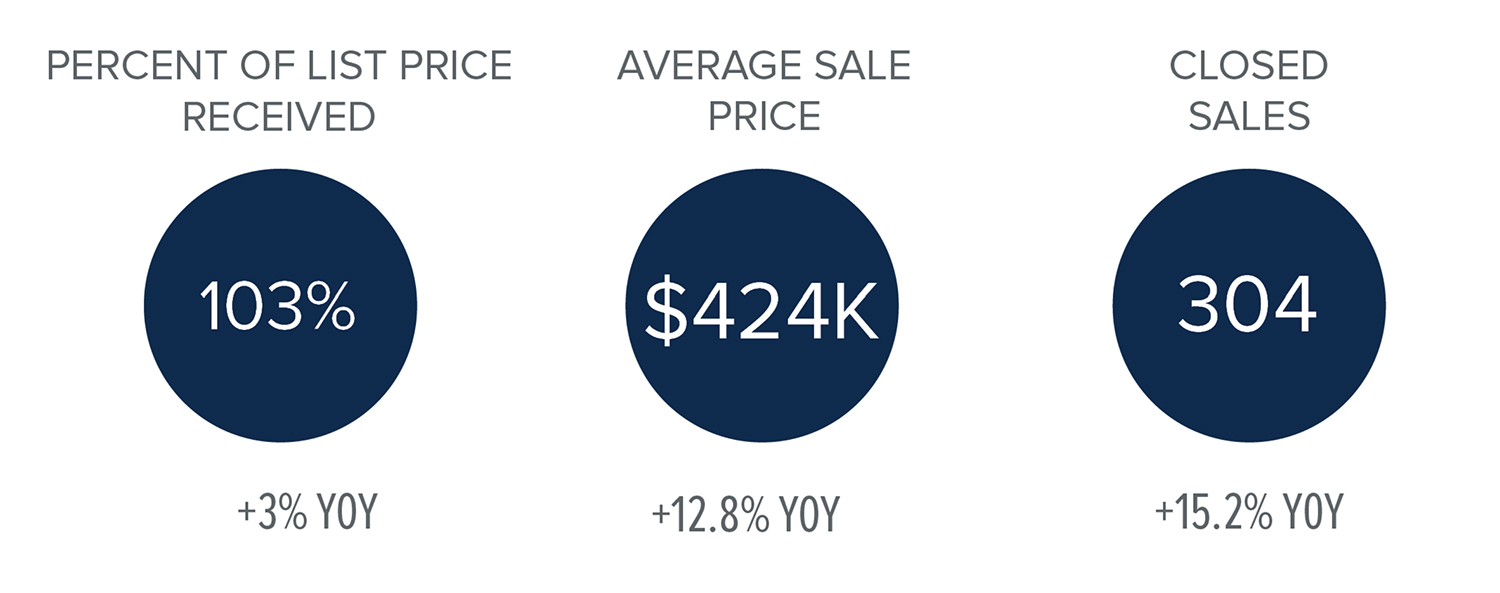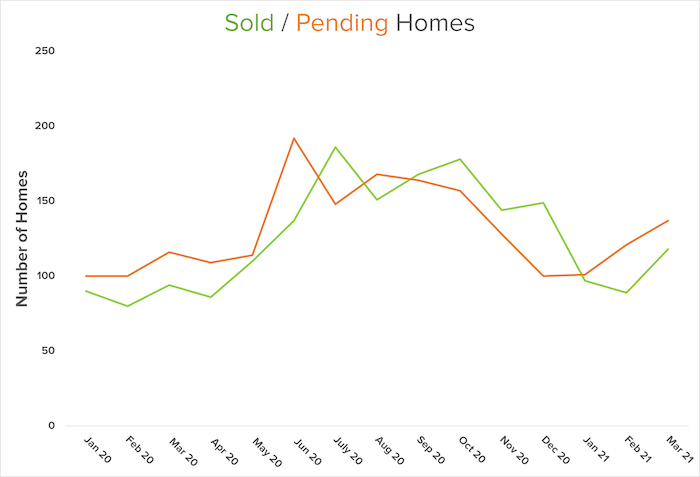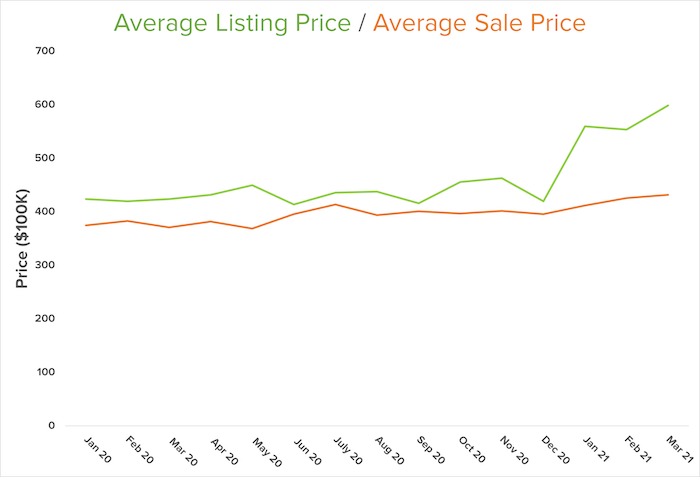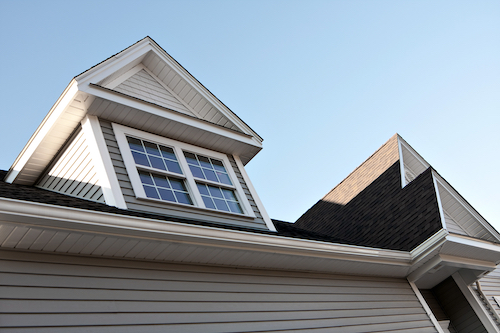Central Kitsap’s market bounced back in our first quarter after the seasonal slowdown. We’ve compiled key statistics to keep you up to date with our local real estate market.

Our Strong Seller’s Market
Central Kitsap just had a great first quarter after the quieter winter season. With Central Kitsap’s proximity to Seattle and Tacoma, it’s appealing to people who are moving away from bigger cities as COVID-19 changes the way we work. There are still many eager buyers outnumbering sellers as inventory remains low and demand remains high. Our Brokers can help you navigate this competitive market. Many current buyers are being outbid and it can be an overwhelming process. That’s why it’s so important to have a local expert as your guide.
In the last five quarters outlined in the graph below, there’s a similar growth trend when comparing 2020’s first quarter to 2021’s first quarter. And, we saw a 15% increase in closed sales year over year. Get ready for the market to continue to heat up as we move from spring to summer.

As you can see below, the listing and sale prices both continue to rise as sellers continue to benefit from our inventory shortage. Many buyers have still been able to meet the pricing demands of this seller’s market. But low inventory means we’ll continue to see even higher prices. These prices could reach an affordability ceiling where potential buyers will be priced out of the market.

Affordability Issues and Market Insights
Matthew Gardner, Windermere’s Chief Economist, continues to track this affordability ceiling in his most recent Housing and Economic Update: “If the pace of home price growth continues, many households will start to be priced out” of what people can actually afford. As Gardner points out, we need more supply, and we need home prices to drop to alleviate this market strain.
Unfortunately, that might not happen fast enough for many hopeful homebuyers to make their dream a reality. Gardner reminds us that the cost of materials, recent storms, and the current housing market prices have all added to the cost of building new homes. This, in turn, will add to the listing price.
Additionally, Gardner points out that mortgage rates have risen after “a jump in bond yields has led rates to spike” as the country re-opens and economic activity increases. The resulting potential inflation causes the 10-year treasury interest rates to rise in hopes of attracting more buyers. However, it is still far below standard rates and shouldn’t be a concern for buyers right now.
Ultimately, it’s still a strong Seller’s Market with an overall low supply and high demand. We expect to continue to see issues with affordability as prices continue to climb.
 Facebook
Facebook
 X
X
 Pinterest
Pinterest
 Copy Link
Copy Link
